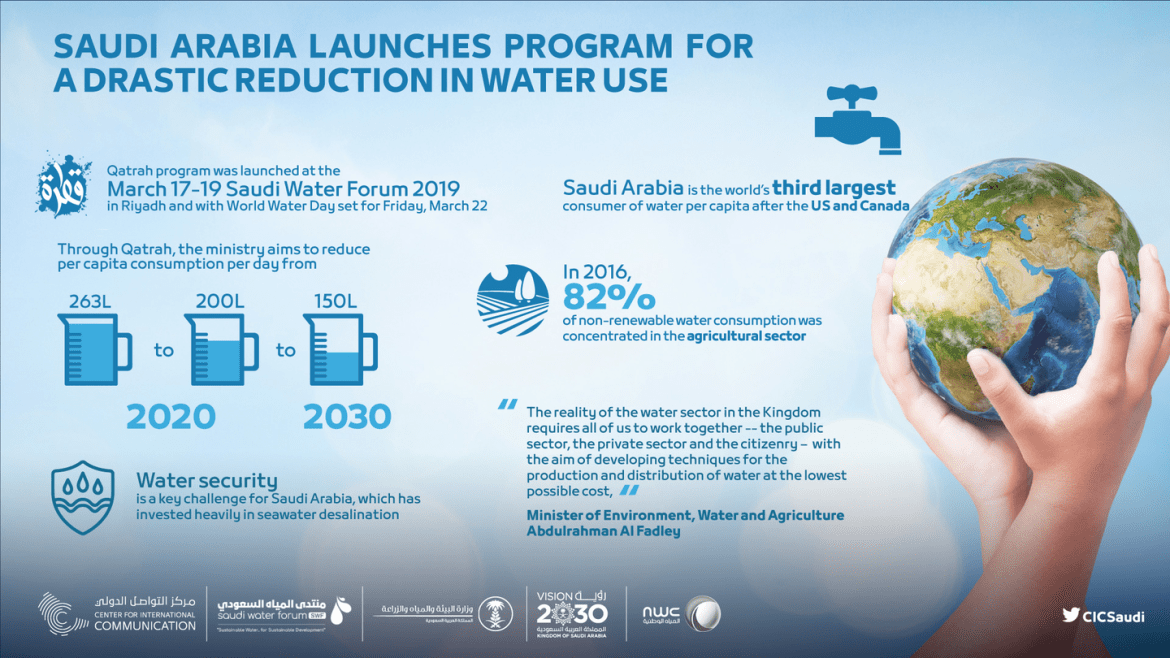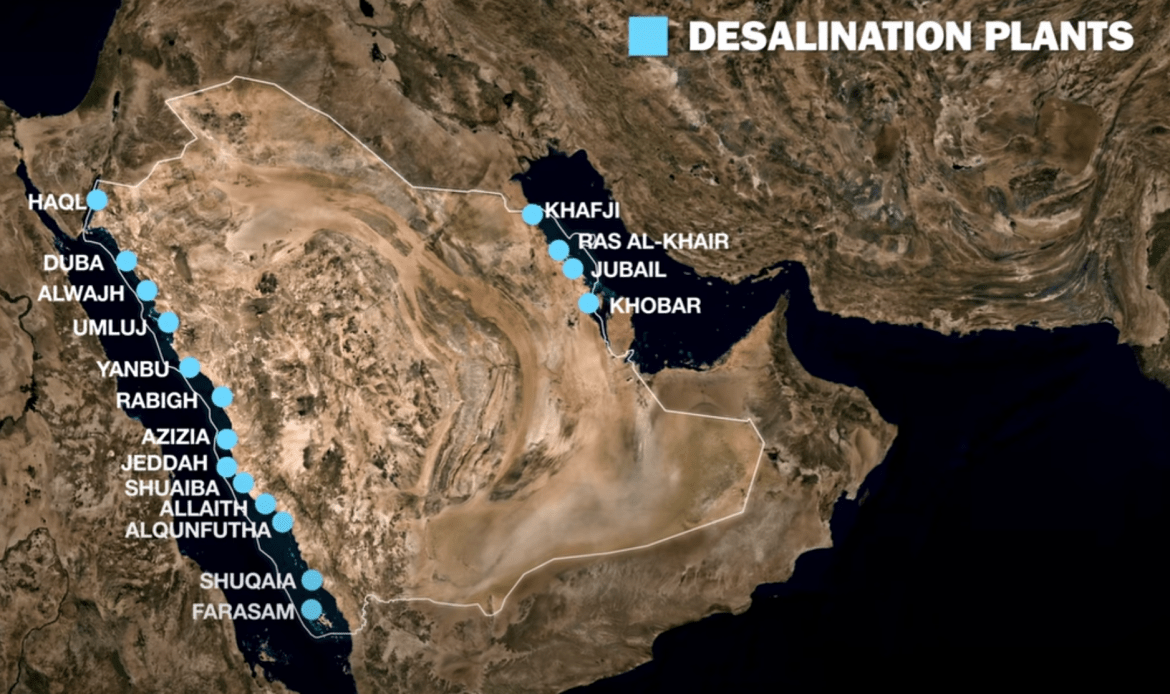How Saudi Arabia manages its extreme Water Crisis – A Detailed Analysis
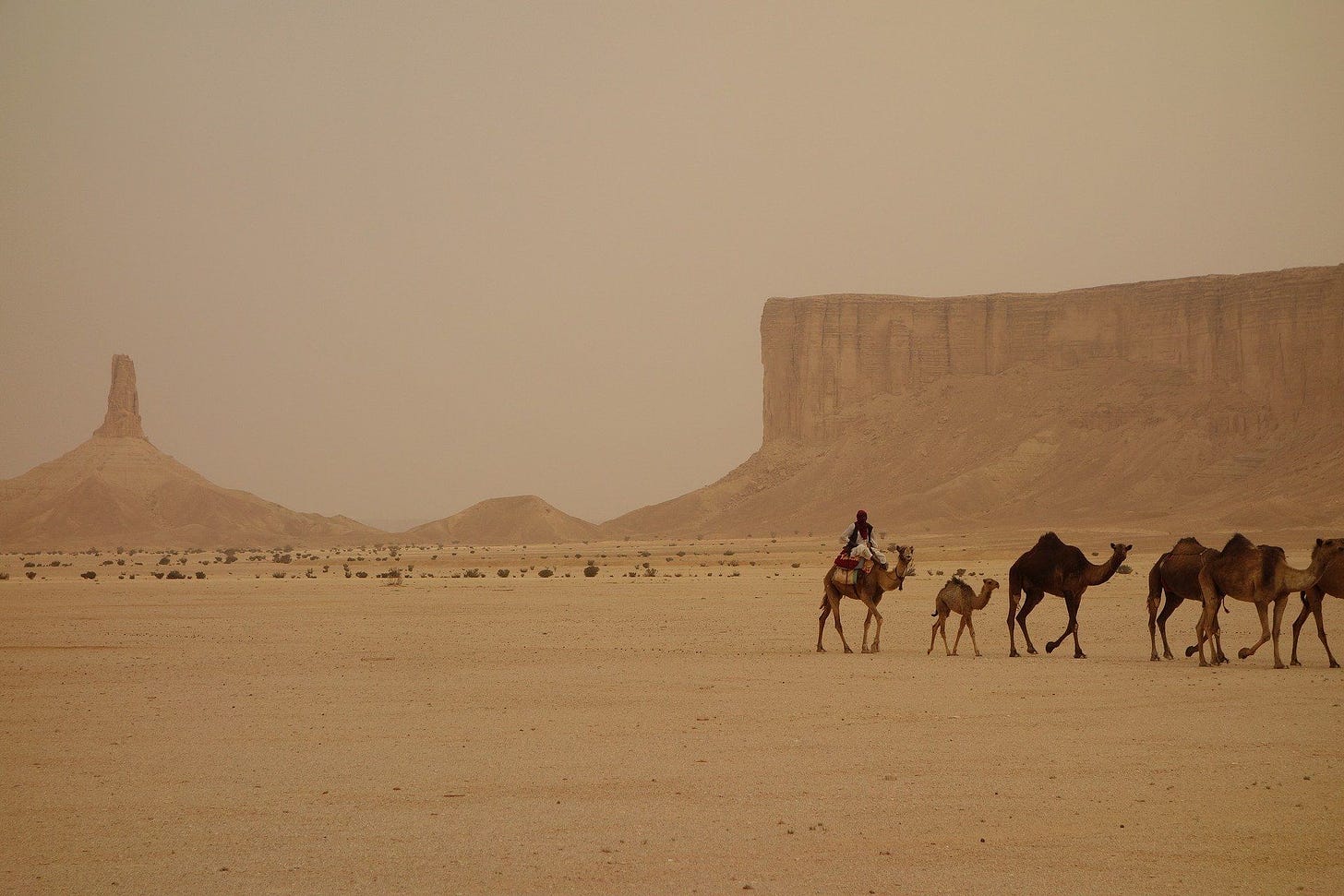
Saudi Arabia is the largest country on earth without rivers. Due to water scarcity, it is an enormous challenge for Saudi Arabia to provide drinking water and food to its inhabitants.
For agriculture despite earlier experiments of self sufficiency, it is now dependent on imports.
All the drinking water in Saudi Arabia comes from two sources: Sea Water and Deep Wells.
Table Of Contents
Water Desalination – mining sea water for fresh drinking elixir
Agriculture colonization and land grab – Virtual water imports
Saudi Arabia’s water challenge
While the former comes from the water desalination plants around the coast, the underground water comes from large aquifers that are being mined for drinking water. Over the years however, the drinking water quality from the aquifers has fallen and it is now contaminated with fluoride. The recommended level for fluoride is 0.7 to 1.2 mg/l. But in Mecca for example, in 1990, the levels were around 2.5 mg/l (source).
Here is a good matrix to show the options that Saudi Arabia has for water sources.
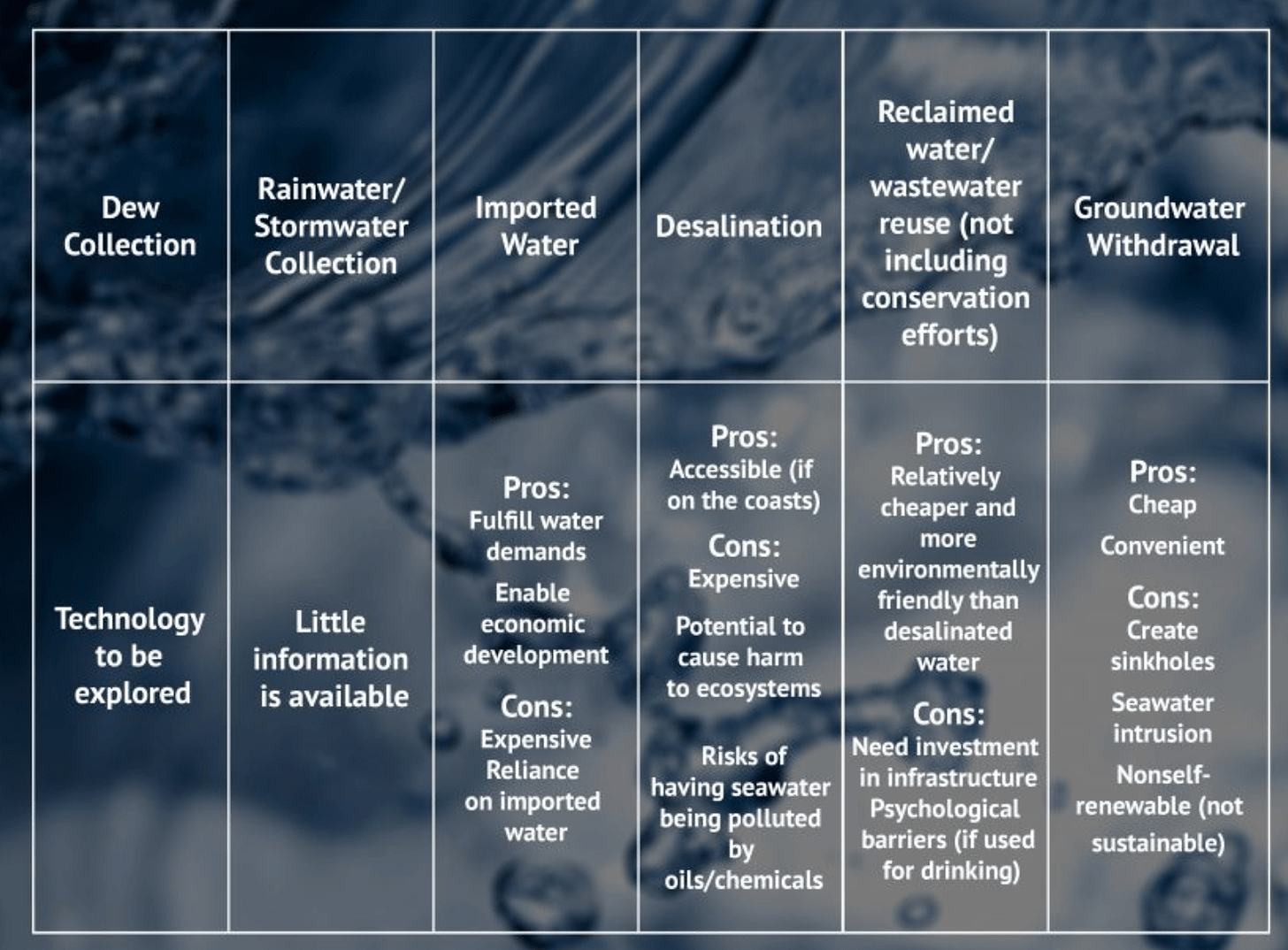
To fight water scarcity in the region, Saudi Arabia has used a combination of the following strategies – desalination, wastewater recycling and reuse, and outsourcing food items or “virtual water trade.” To preserve water and reduce daily per capita consumption from 263 liters to 200 liters by 2020 and to 150 liters by 2030 the Saudi government has started the Qatrah program. Qatrah meaning droplet. Here is the infographic from the Saudi government on that program.
Let us go through the various sources of water and the challenges that Saudi Arabia faces in detail.
Waste-water Recycling
One source of water in Saudi Arabia are the waste water treatment plants. This source of water, however, is very small compared to the overall needs of the kingdom.
The Kingdom has 33 wastewater treatment plants with a capacity of 748 million cubic meters per year. The volume of waste water treatment has been increasing rapidly. It was 66 percent in 2011 and 77 percent in 2014. This figure was expected to reach 80 percent by 2019 and 100% by 2025.
“Over $66 billion in long-term capital investments have been committed for water and sanitation projects in the Kingdom in the next 10 years, while the government aims to achieve 100 percent reuse of wastewater from cities with 5,000 inhabitants or more by 2025,” the Saudi Gazette reported.Wateronline
Approximately 2.9 billion cubic meters of sewage is produced in Saudi households. This population roughly use around 3.6 billion cubic meters of drinking water. Even though the waste water treatment is done on global standards, only 9 percent of the treated water is used for irrigation.
The problem is that the sewage waste far outstrips the capacity to process it. The total sewage waste is to increase to 825 million cubic meters, with 400 million cubic meters coming from Riyadh, 365 million cubic meters from Jeddah and the rest from Makkah, Madinah and Dammam (source).
Water Desalination – mining sea water for fresh drinking elixir
One of the ways that Saudi Arabia has tried to tide over the water crisis has been water desalination plants. Saudi Arabia is the world’s largest producer of desalinated water. By 2011, the country’s 27 desalination plants at 17 different locations were supplying 3.3 million m3/day (1.2 billion m3/year) of water. 6 of these plants are located on the East coast and 21 are on the Red Sea coast.
The Saudi government commissioned a host of private companies from all over the world to run these desalination plants. In order to keep costs low for the consumer, the government buys the water from these companies and sells it to households at a significantly lower price.
Collateral damage: Brine pollution
Water desalination plants have been throwing the side-product Brine with heavy concentration of salt back into the sea. This wreaks havoc in the oceans as the oxygen levels fall and salt content rises tremendously! How much brine is being thrown into the seas by the 16,000 operating desalination facilities world-wide is anyone’s guess.
Researchers report today that global desal brine production is 50 percent higher than previous estimates, totaling 141.5 million cubic meters a day, compared to 95 million cubic meters of actual freshwater output from the facilities.Wired
So even the water desalination plants are not environmentally sustainable. They will end up destroying the very resource that is being used to provide the lifesaving water.
Underground aquifers as water source and Saudi Crop Circles
50 years back, Saudi Arabia had one of the world’s biggest and oldest aquifers, containing an estimated 500 cubic kilometers of water. And the kingdom embarked on self sufficiency program in agriculture. This led to rampant use of water without much
Over 80 percent of the water used in Saudi Arabia goes toward agriculture. The Saudis use groundwater to irrigate land in that desert. This means that the groundwater is drying up at a rapid speed! The crops are grown in focused crop circles in the desert. These circles started popping up since the 1970s and have been growing.
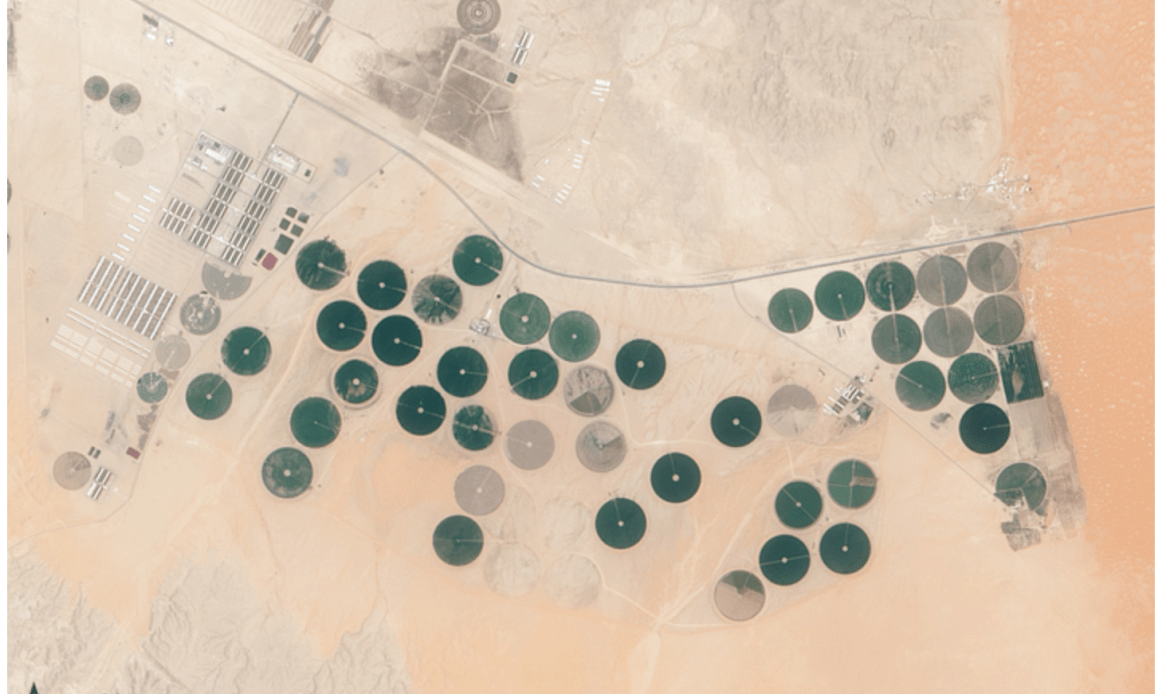
The circular feature is due to the irrigation mechanism in these fields.
These fields have a distinctive circular pattern that they owe to the center pivot irrigation system, which delivers water to the crops from a central point in the middle of each field. The fields are usually about 0.6 mile in diameter.Spaceknow
The Saudi farmers have emptied most of the groundwater reserves and now the Saudi government has taken away the subsidies for water intensive agriculture.
What is the future of water in Saudi Arabia if the water in the deep wells is drying? Well, if you believe Ahmed Safar Al Asmari, the guy who runs one of Berain’s two factories in Riyadh – “Studies show water in some reserves can stand consumption for another 150 years. In Saudi Arabia, we have many reserves – we have no problems in this area.”
But that maybe an extremely rosy picture. Because the water expert, Mohammed Al-Ghamdi, at King Faisal University says that the aquifers in Saudi desert have water left for only 13 years.
The UN Food and Agriculture Organisation said in their report in 2008 that the time to depletion could be just 25 years. And, they have been depleting water from aquifers that were formed 20,000 years back! That water, which is being recharged at a very low rate has been taken by this generation of Saudis mercilessly!
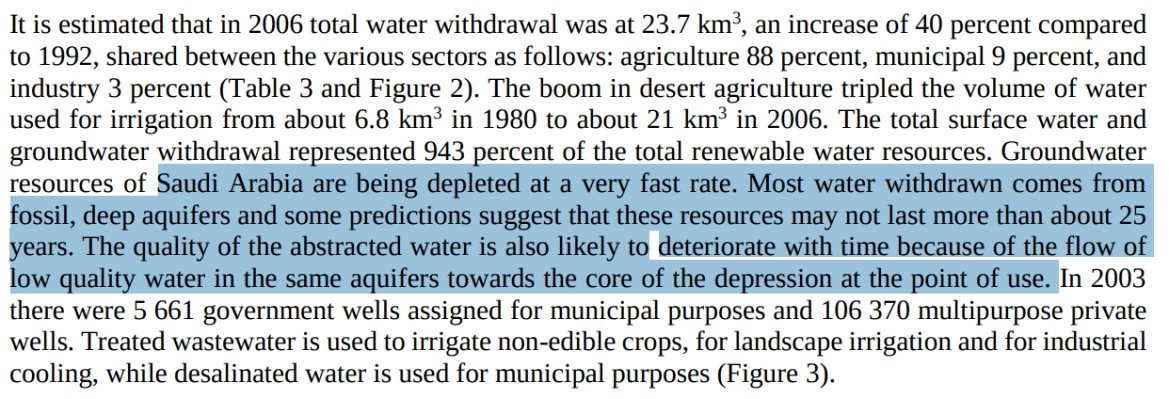
So agriculture within the country using the aquifer water resources has not only been unsustainable but has ended up destroying one of world’s largest aquifers underground!
So what are the options?
Agriculture colonization and land grab – Virtual water imports
To resolve the food problem, Saudi companies have been buying large tracts of lands in various parts of the world, including the US.
Africa and Asia
One of the largest earliest investment was in Gambella, in Western Ethiopia, where Saudi Star company leased 10,000 hectares for 60 years. The company eventually wanted to increase its holdings to 500,000 hectares in the Gambella region and in other parts of Ethiopia.
This has meant that the local population and their natural resources are being exploited. The locals have been complaining that little or no compensation was paid to them for the takeover of their land. They are also talking about how the rampant fisheries and foreign plants have destroyed bees and local honey production, which was vital to them (source). This exploitation has obviously not gone well with the Ethiopians. On top of that 120,000 Ethiopians were deported from Saudi Arabia in 2013, which strained the relationship further.
Another attempt by Bin Laden group to acquire 2 million hectares of land in Indonesia ran into trouble. Similar projects in Senegal and Mali are in trouble as well.
Meanwhile, the very wealthy Al Rajhi family has been buying land in Mauritania and Sudan for agriculture.
Needless to say that Saudi Arabia is facing stiff competition from other countries like Kuwait, Qatar and the UAE in the middle east as well.
United States
Saudi Arabia has also been buying land in US, states like California and Arizona to grow Alfalfa for its cattle to give milk.
Privately held Fondomonte California on Sunday announced that it bought 1,790 acres of farmland in Blythe, California — an agricultural town along the Colorado River — for nearly $32 million. Two years ago, Fondomont’s parent company, Saudi food giant Almarai, purchased another 10,000 acres of farmland about 50 miles away in Vicksburg, Arizona, for around $48 million.CNBC
What is disturbing is that Saudi Arabian company called Almarai is also buying land in Arizona, a desert and pumping water from whatever is left of its water table. Why Arizona? Because it is a state that has little or no regulation on groundwater use. Other states have. So Saudis are busy pumping water like crazy.
Local development and groundwater pumping have contributed to the groundwater table falling since 2010 by more than 50 feet in parts of La Paz County, 130 miles west of Phoenix. State documents show there are at least 23 water wells on the lands controlled by Alamarai’s subsidiary, Fondomonte Arizona. Each of the wells is capable of pumping more than 100,000 gallons daily.CNBC
Basically, Saudis are buying American land water for free and taking it in shape of crops back home.
International land grab – not just Saudi Arabia
International land grab is happening rampantly across the world. As per one study way back in 2013, 0.75-1.75 percent of the world’s agricultural land had already been sold in countries to another foreign country.
The countries which are buying agricultural lands in other countries include those in North America and Europe, China and the oil rich countries like Saudi Arabia. The countries which are selling or leasing their lands include those in Africa, South America, Southeast Asia and Eastern Europe. The rich countries are buying agriculturally rich lands in poor and developing countries.
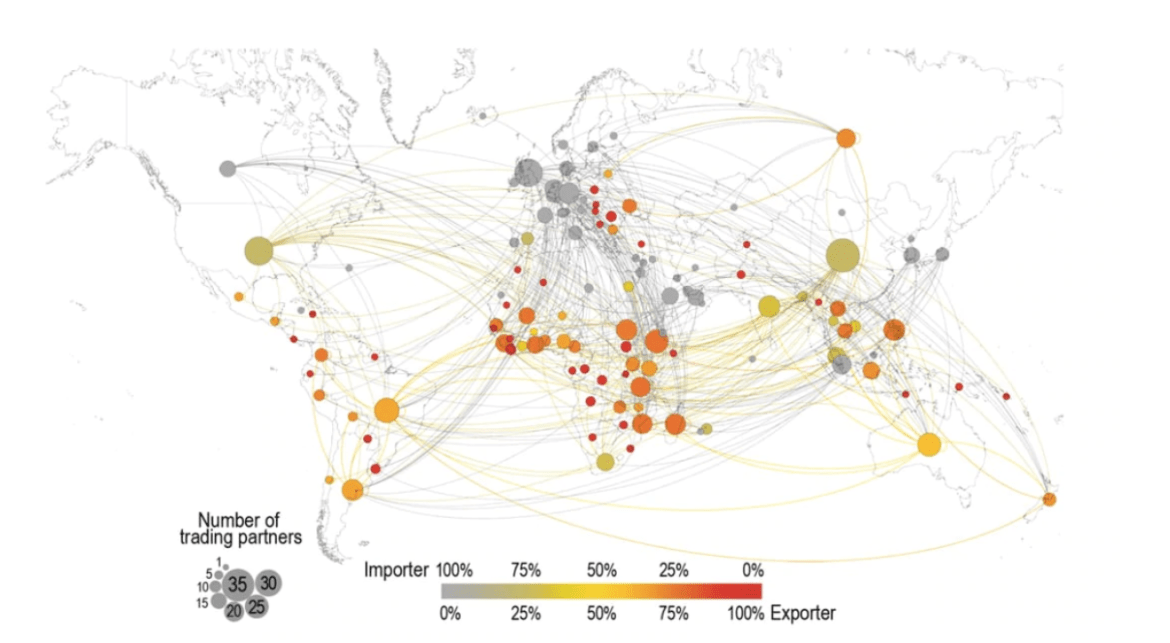
The map shows where governments and agribusinesses are buying and leasing land in foreign countries. Countries that are more engaged in buying land internationally are shown in grey or shades of yellow, while countries that sell more land are shown in red. The bigger the circle, the more trading partners a country has.
This is called as “Virtual Trade”, where countries are importing water, land and even less pollution by buying certain goods from another country. For example, a country which is deficient in fresh water can get over that hurdle by buying water intensive products like meats and other crops from another country, thus stressing the water resources of that society!
What is the future of Saudi Arabia?
With the local aquifers predicted to last a maximum of 25 years, give or take. And Water desalination is also not a very long term option because of the brine discharge in the very oceans that are mined for drinking water! The foreign land grab for even food has its limits. One because of social unrest and second because of global competition.
When the water runs out, no amount of wealth and oil can save the population because life cannot be sustained in that place. And the way the current generation of Saudis is quickly depleting its current resources and polluting them, it is obvious that even if 100% of the waste water is recycled, life sustenance will still be very tough.
When it all started out, maybe the answer would have been in abstinence and a different life-style. But with so much wealth comes an ego and confidence. And a lifestyle imperative. Where wealth believes it can over-ride nature.
For some time it can. Or so it seems.
But in the end, nature wins.




